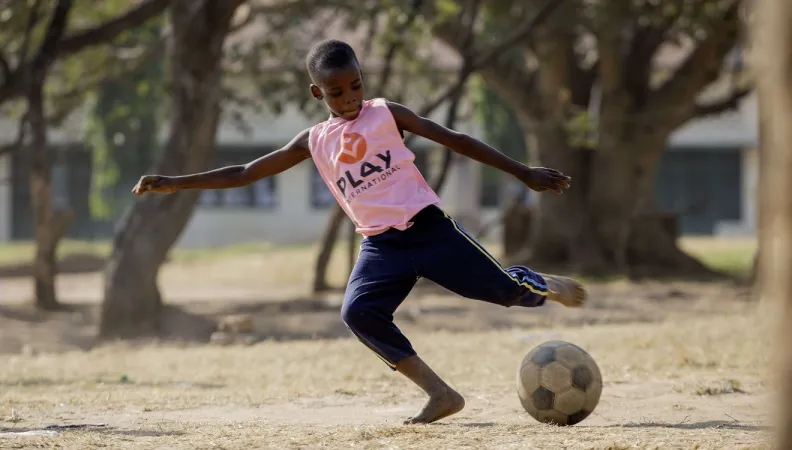Share the page
Soccer: A Playmaker in Africa's Development
Published on

A new collection of wide-ranging analyses of Africa’s economies and social issues is out now. In the 2024 edition of L’Économie Africaine (“African Economies”), one chapter is even devoted to soccer, whose economic and social impact extends beyond the field, to affect everything from health and education to social cohesion.
Soccer is played and watched across the African continent, as can be seen from the massive attention paid to the Africa Cup of Nations, currently underway in Côte d’Ivoire.
At first glance, the “beautiful sport” would have little to do with the “dismal science,” but this year’s installment of African Economies devotes a chapter to soccer for the first time.
Authors sum up the phenomenon as follows: “At international competitions like the Africa Cup of Nations, people come together to support their teams, and young people in particular experience a sense of belonging and solidarity,” say authors G. A. Akindes, M. Desbordes, C. Dias, and V. Eche.
Respect, team spirit, and self-confidence
The experts go on to state that "soccer is a unifying force that gives young people the chance to express themselves and forge links," something worth considering in the light of the fact that 60% of Africans are under the age of 25 and that by 2050, one in three young people around the world will be African.
Soccer’s impact on health, education, social cohesion, and gender equality is even considered to be a driving force for reaching the Sustainable Development Goals (SDGs).
Chapter One of the book highlights the work of the NGO Play International, which for more than 20 years has treated sports—and especially soccer—as a development tool for education, social inclusion, and youth-related development projects. Its project “Ejo” (“tomorrow” in Kirundi) has enabled more than 50,000 children in Senegal, Liberia, and Burundi to acquire new knowledge at school along with the life skills of respect, team spirit and self-confidence.
Find out more: Sports as a Driver of Development and Peace
The chapter also highlights the role of the international governing body of soccer, FIFA, which uses income from major international events such as the World Cup to invest heavily in the development of the sport in Africa. Its Fifa Forward program, for example, allocated $717 million (€660 million) to 385 projects in Africa between 2016 and 2022. The funds went mainly to develop sports infrastructure, capacity building, and the organization of competitions.
Budgets not always used up
From 2023 to 2026, FIFA plans to pay each national member association in Africa up to $3 million (€2.75 million) for investment in soccer development projects in their country. It has also provided for a budget of $38 million (€34.9 million) over the next three years for its foundation, which has soccer development programs focused on health, education, inclusion, environmental protection, and women’s soccer.
See also: Sport for Mental Health and Social Cohesion
However, beneficiary national federations often use only part of the funds available – this year’s host, Côte d’Ivoire, used only 50% of its allocation. The authors say this may be because countries face difficulties carrying out projects that comply with FIFA Forward program requirements.
Public sports policies
Countries such as Senegal, Benin and South Africa are seizing on the opportunity, with support taking the form of public sports policies, the promotion of sports, and efforts by governments to host major international sporting events.
Cameroon, for instance, invested more than €1 billion in the organization of the 2019 AFCON on sports infrastructure, roads, hotels, internet connections, and hospitals. Rwanda, for its part, has made soccer a way to improve its image and strengthen its tourist attractiveness. Under the slogan “Visit Rwanda,” unprecedented partnerships have been signed with the Arsenal and PSG teams, for €36 and €30 million respectively over three years.
Soccer in Africa “is undeniably a mirror of the continent’s in-depth economic, political, and social transformation,” conclude the authors of African Economies 2024, “but there are still some challenges to overcome to fully exploit the potential of the continent’s most popular sport.”
